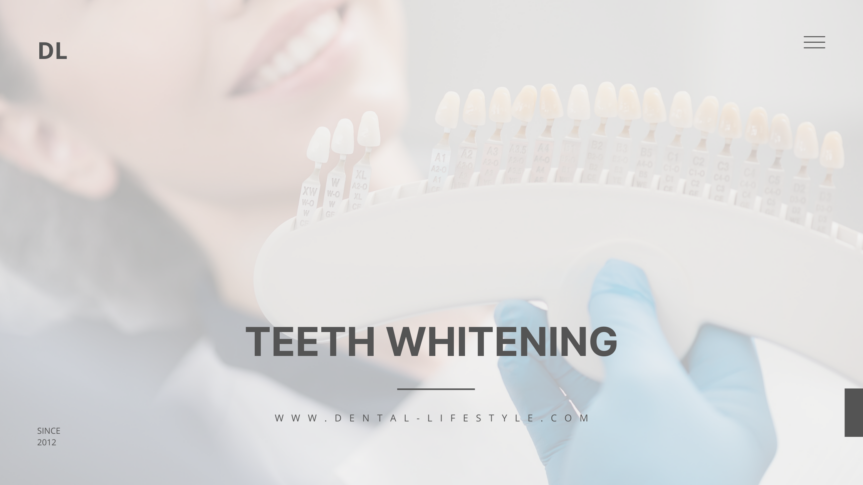In the market, as you have probably noticed already, there is a wide variety of systems for teeth whitening. The commercial products are essentially diluted versions of bleaching agents used by dentists. So they are relatively safer to use by non-specialists. Unfortunately, this means that their effectiveness is significantly reduced.
Moreover, treatments taking place in the dental office have almost immediate results. Whereas treatments at home require significantly more time and effort, to get the results you want.
Although approved products for home whitening are generally safe, if used properly, they are not suitable for everyone. Before using any teeth whitening product, you should visit your dentist for a complete dental examination and ask his advice. It is possible your teeth’s aesthetic problems require different treatments.
There are different methods you can use to whiten your teeth at home.
Whitening teeth with plastic trays
Although bleaching trays can be found in pharmacies or on the Internet and they can look very similar to those provided by dentists, there is a very significant difference. The trays in the market are prefabricated and do not perfectly fit the shape of the mouth and your teeth. In comparison to those made by your dentist.
Therefore, commercial bleaching systems are quite cheap, but because they are not in perfect contact with your teeth, the result may be uneven.
Because of their incomplete adjustment, they may cause leakage of the bleaching agent causing gum irritation and reducing the efficiency of whitening. Furthermore, the concentration of whitening gel provided in these packages (up to 6% hydrogen peroxide) is much lower than that used by dentists in practice.
Their application is similar but will require several more years of home whitening systems to achieve the same result dentists can achieve. You have to fill each tray with the recommended amount of whitening gel and put it on your mouth for 30′ to several hours according to the instructions of each system. In most cases, the desired result is achieved in one or two weeks.
Whitening Strips
The whitening strips are very thin, virtually invisible strips of flexible polyethylene (plastic) positioned over the front teeth. The films are coated on one side with a thin layer of gel whitening agent(hydrogen peroxide). You can find strips with various concentrations of peroxide, the maximum being 10%.
The packaging provides two separate strip sets. One for the upper and one for the lower teeth with different shapes for better fitting. Each strip is placed over the teeth and then gently pressed onto them in order to achieve maximum contact.
One of the main advantages of this method is that the amount of the whitening agent is highly accurate. It has already been applied on each tape by the manufacturer minimizing the risks associated with using excessive dosages. Also, the strips come in less contact with the gums, reducing gum irritation.
The whitening strips usually cover only 6-8 central front teeth. This means that people with a wide smile can take additional bleaching in some teeth if they wish to. Generally, whitening strips are much easier and safer to use than the previous whitening system.
Whitening applicator brush (Paint-on)
These whitening products are a different matter, but their action is also based on teeth whitening using peroxide, as do most of the related products. The main difference is the method of applying the bleach to the tooth surface. The bleach (gel by hydrogen peroxide), is directly applied by the user on the tooth surface using a small brush.
Whitening toothpastes
The whitening toothpastes provide a low-cost alternative for teeth whitening for those who do not want to spend money on a professional treatment.
Of course you should not expect the same results that you would get after a whitening in the dental office.
However, a whitening toothpaste may be sufficiently effective for slightly yellow teeth. What they actually do is restore the natural color of teeth by removing any stains from the outer layers of the tooth enamel.
Most whitening toothpaste is operated by the action of stronger abrasive material relative to the simple toothpaste. Therefore caution should be exercised in the way of brushing and usage to prevent permanent damage due to abrasion on the tooth surface.
There is also another type of whitening toothpaste available, more powerful and for limited use, available only in pharmacies and should be used once a week or every 15 days.
Athina Tsiorva


